I invited Phil Collier to share a story about his experiences with Surrey Hills. My involvement with Phil started when my colleague, James Dick, first told me about a plan to have volunteers do conservation work on Surrey Hills. I was immediately cautious and a little wary. But, as Phil points out below, so were the volunteers!
I had no idea of the participants and their motivations. Gunns wanted to improve its management of threatened species on Surrey Hills. We were already carrying out work to protect the ptunnara brown butterfly and were supporting necessary research on the Tasmanian devil. But we lacked the specialist knowledge and resources to implement a worthwhile program for other species such as the crowded leek-orchid.
Phil and his wife Robin Garnett were already involved in threatened species management on their property near Port Sorell. They were the first to purchase from the Tasmanian Land Conservancy’s revolving fund when they bought 20 hectares of coastal bush. What I liked most about their approach was their willingness to use active management to achieve their goals. They created firebreaks, maintained management tracks and carried out ecological burns. In doing so, they created a property recognised for its biodiversity, with over 50 species of orchids.
Phil told me that he didn’t want the blog to be about him, and it isn’t. However, he is an integral part of this incredible story and deserves some accolades for this unique program that lasted over a decade. I knew this was a genuine attempt to forge a unique partnership between the private sector and volunteers in managing threatened species from the moment we met. Phil also deserves credit for overcoming the negative perceptions some of the conservation volunteers held against Gunns and the timber industry in Tasmania at the time. I am sure the volunteers who participated in the program over the years got a lot out of it, as have the landowners.
Forico, the current forest manager, is extremely appreciative of the dedication and passion shown by all the volunteers. They are grateful for the commitment and dedication shown by Phil and Robin, in particular, who co-ordinated much of the monitoring programs over many years. Phil diligently analysed the results each year. His report in 2018 summarised the monitoring program undertaken over the past decade at Surrey Hills and Henry Somerset Conservation Area. The findings and conclusions have assisted Forico in implementing important management decisions. This has been a true example of collaboration, where research and working with volunteers has complemented business decisions.
While I outlined in detail the development of the program in Chapter 13 of my book “Fires, Farms and Forests”, this blog provides a personal reflection of the program from the view of volunteers approaching a large corporate business.
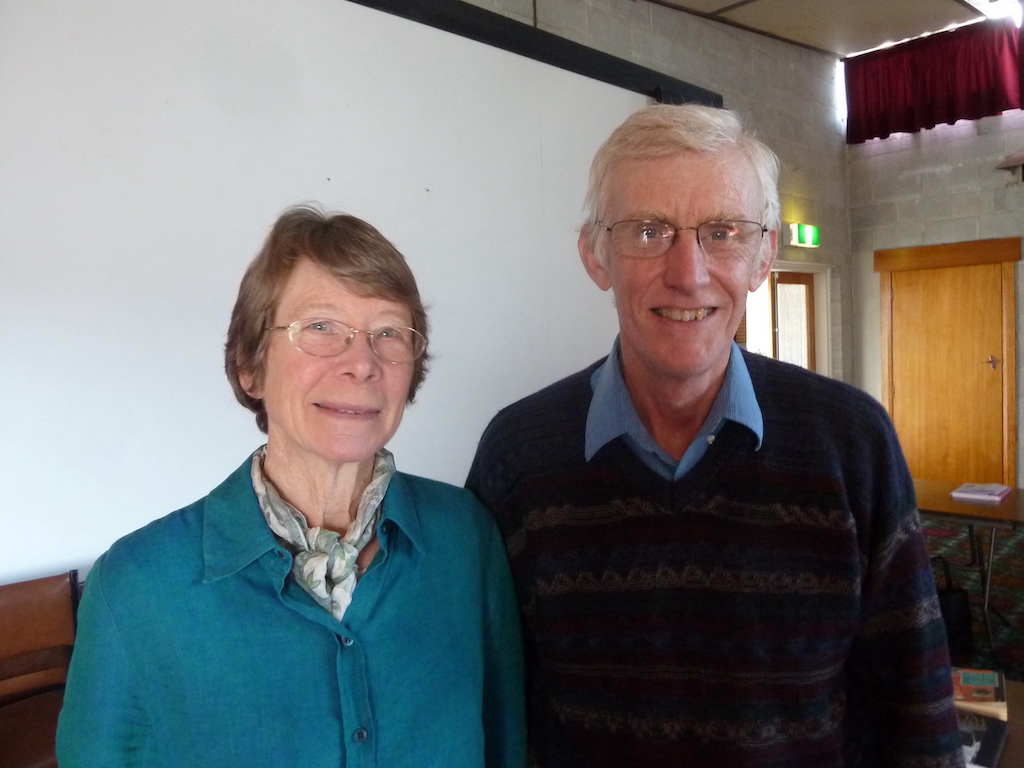
In retrospect, I’m still puzzled: how did a collection of apparently disparate people and organisations come together in 2008-9 and then work on a very satisfying project over a period of ten years at Surrey Hills? This is a story of how the project developed and what was achieved. I believe it provides a template for the future.
The star of the project is a species called the crowded leek-orchid, or Prasophyllum crebriflorum. Its plants have lived in and around Surrey Hills probably for millennia, and possibly even evolved there as they are not known with certainty from anywhere else.[1] The crowded leek-orchid was “discovered” during a grassland management day in 1999. It was described as new to science and named in 2003 and soon after listed as endangered. In 1999, Surrey Hills was owned by the forestry company North Forest Products, a subsidiary of North Ltd, later by Gunns Ltd, and now by Forico.
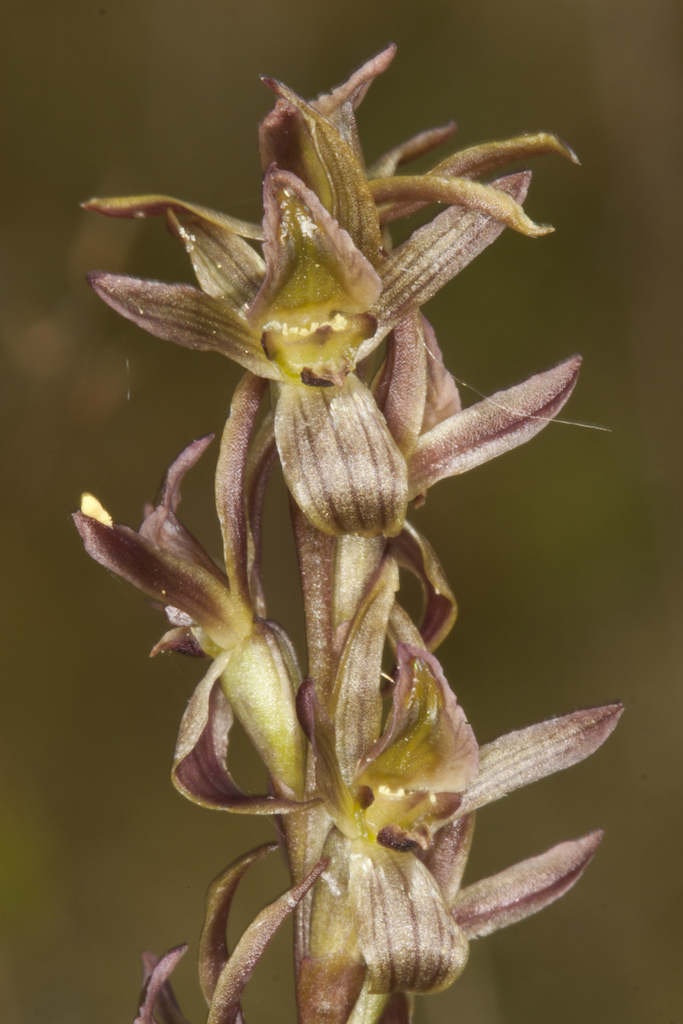
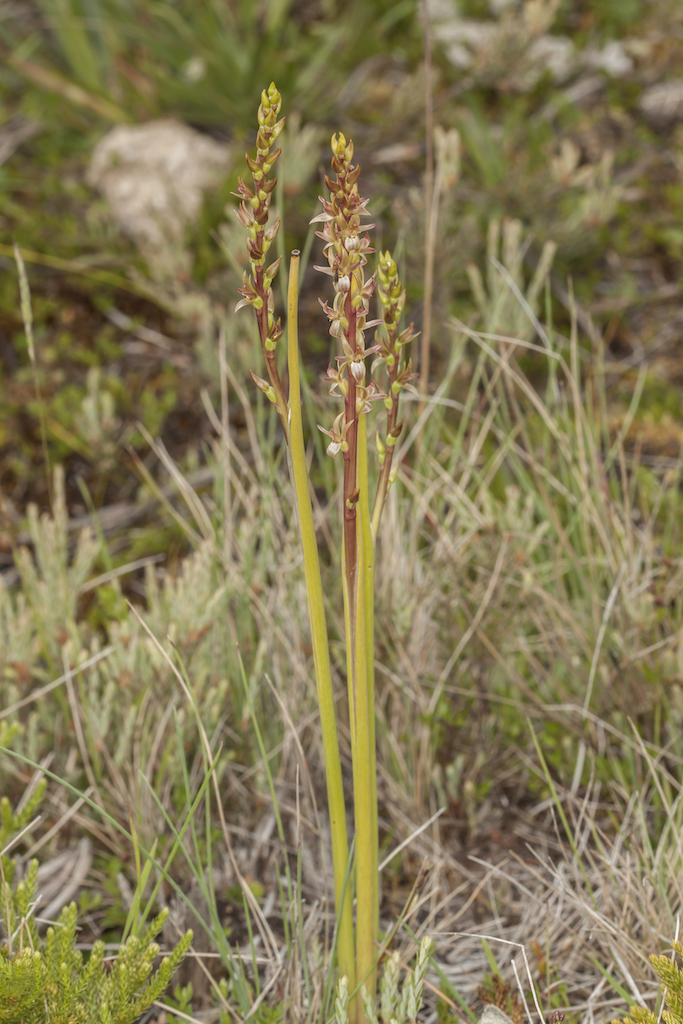
We first need to turn the clock back much further to the 1960s, when APPM were owners of Surrey Hills, through its subsidiary Associated Forest Holdings (AFH). Sir Henry Somerset was then the Managing Director of APPM, a businessman who was very interested in aspects of natural history and recognised the importance of conservation in conjunction with forestry operations. It seems clear that this attitude persisted amongst key personnel at Surrey Hills until the field day in 1999, and then continued during Gunns, and now the Forico, ownership.[2]
Another important influence in 2006-7 was a group consisting of government botanists at DPIPWE and staff at Wildcare Tas Inc.[3] This group saw an opportunity to engage volunteers from the community with threatened species recovery. A project officer was appointed and soon advertised public meetings that eventually led to the creation of Threatened Plants Tasmania (TPT). My abiding memory of these meetings was discussion of various perspectives including that TPT could help with weeding projects, i.e. a kind-of Landcare flying squad, and some participants wanted nothing to do with Gunns.
I was privileged to be appointed the inaugural president of TPT as a new Wildcare group. Soon after, the TPT committee made the decision to become a knowledge-based organisation, with a focus on surveying and monitoring priority species, with weeding and other on-ground works as secondary. At the same time, my wife Robin and I also managed a covenanted property in north-west Tasmania with 50+ orchid species with our own private monitoring program.
Around the time that TPT was being established, there was a project to work on the recovery of Tasmania’s numerous threatened orchid species. In 2008-9, the Cradle Coast Authority, through its natural resource management subsidiary, initiated a project to improve the status and protection of some local threatened flora. One of the focal species was the crowded leek-orchid at Surrey Hills, including one task to establish long-term monitoring. I was invited to one of the field trips that set up the monitoring, and TPT later agreed to be responsible for on-going monitoring after the Cradle Coast project had finished. In the process, TPT stretched Wildcare’s mandate beyond public land and ignored the earlier protests about any relationship with Gunns!
Before the monitoring set-up, Surrey Hills was little-known to me. For a botanist, in particular, it’s a real gem, with extensive sub-alpine grasslands and sedgelands. These grasslands are actively managed by people[4] who have a long-term interest, with a plan, and the resources to carry out the plan. The same people are knowledgeable and experienced foresters, with a profit motive of course, but they were able speak our language with humility and humour, at least while we were on site! It was almost a dream come true.
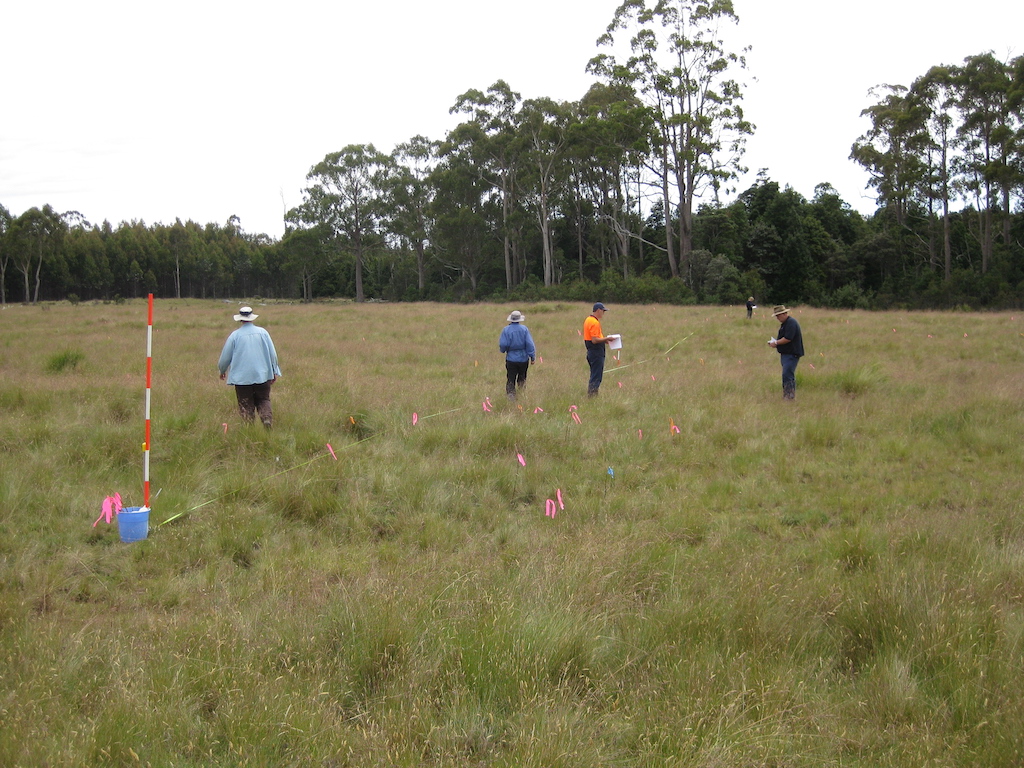
I’m sure that it’s fair to say that TPT volunteers have had a lot of fun at Surrey Hills since 2009. We’ve had an on-going relationship with forestry staff, who often accompanied us on various field trips. The old school “camp” at the abandoned railway town of Guildford was regularly made available for weekend field trips. The camp is a dry and comfortable refuge when Surrey Hills turns on its regular freezing downpours, and a great place to relax with a group of friends after a day in the field.
During the Surrey Hills field trips, we continued to monitor the crowded leek-orchids each January. We embarked on exploration of many places, especially recently burnt plains, to search for new populations of orchids and other threatened plant species. On one of the plains, we estimated the total population of crowded leek-orchids by sending small groups out to randomly selected 5m x 5m quadrats. Later we set out our own super-sized “cricket pitch”, where we counted crowded leek-orchid plants each year to track changes over time.
The main purpose of all this activity was to learn more about the population dynamics of the crowded leek-orchid. Or in different language: how do these orchids live their lives, and how does this change when, for example, their grassland habitat is burnt? Having been “discovered” only in 1999, we started with little specific information, apart from some general principles. First amongst these is that Surrey Hills grassland requires regular burning to avoid incursions by scrub and later rainforest. We assume that previous inhabitants of the area had burned regularly to sustain the grasslands, and modern burning is a continuation of this practice. Arguably, crowded leek-orchid plants have evolved to thrive with this on-going management and would suffer if it were to be discontinued. Secondly, a burn is generally thought to provide an impetus for orchids to flower and fruit.
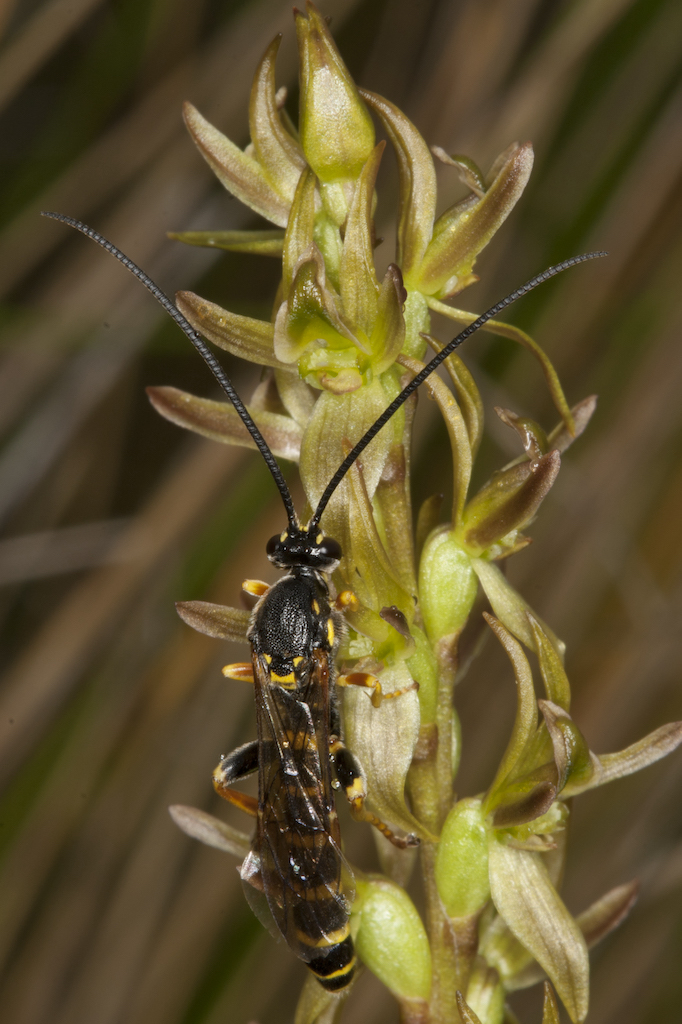
But there is a complication: Surrey Hills grasslands are not just home to crowded leek-orchids; the ptunarra brown butterfly is also present as another priority threatened species. The butterfly flies in the autumn, shortly after the orchids have died back to their underground tubers. Because of this, burning at Surrey Hills is usually delayed until early spring, when the forest edge is still conveniently wet, but the grasslands have dried after a few days without rain. But this is not the traditional time for an ecological burn, however, we know little about past burning practice at Surrey Hills.
After a burn, we indeed found that orchid plants responded as expected, sometimes with very robust leaves that looked full of potential, only then to disappear. This first happened in 2008-9 when the monitoring was being set up, and again in 2012-3 after a burn in June 2012.[5] Using our monitoring data, we modelled the disappearance of plants, which increases alarmingly as the growing season progressed. As a result, we recommended that larger areas be burnt to avoid concentrating the grazing pressure on smaller burn units, and later showed that caging plants makes a huge difference. Unfortunately, caging is very labour intensive and only feasible in an emergency.
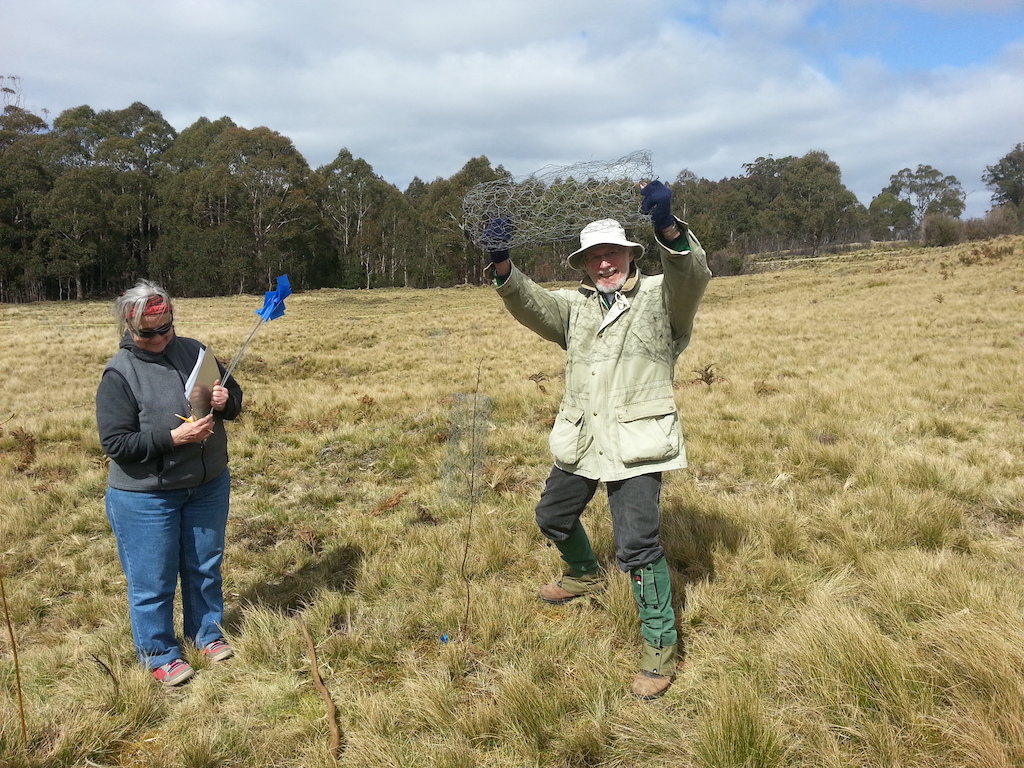
Unlike many related orchid species, we did not find a huge increase in flowering soon after the burns.[6] In fact, the proportion of monitored plants that flowered remained similar for at least five years after a burn. We were always able to find new flowering plants near to the monitored plants during each of these five years. On the other hand, our modelling shows that nearly a quarter of orchid plants die each year. It is therefore vital that flowering occurs regularly, so that seed is produced regularly.
Ten years of monitoring is a laudable effort. We monitored after planned burns in 2008, 2012 and 2014, but nature also provides wet years, dry years, and variations in grazing according to an unplanned schedule. If we had 100 years of monitoring, we might have seen all combinations of these effects, but not in 10 years. So, there is still much that we don’t know, but at least we have some specific knowledge that may help the management of the precious crowded leek-orchid plants in the meantime.
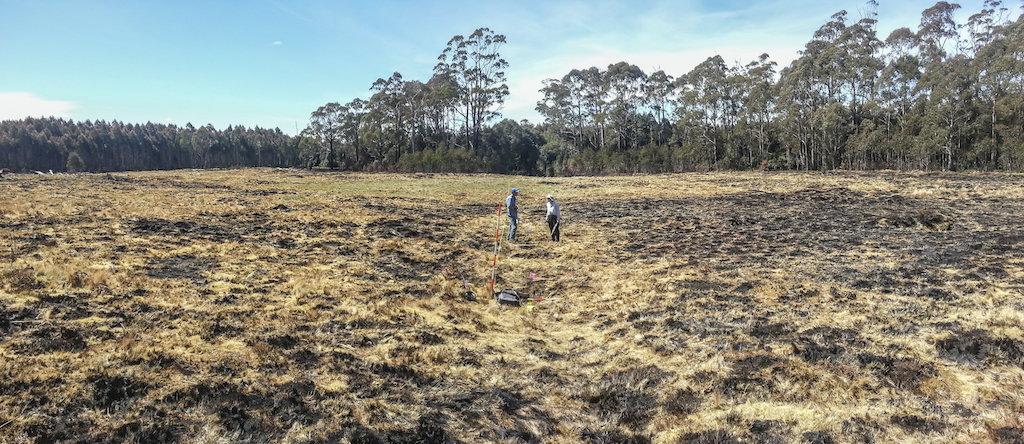
Very broadly speaking the world is comprised of public land for conservation and private land that is alienated one way or another; and public land managers lack resources while private land is managed for profit or aesthetics. Only occasionally do the two perspectives meet. My vision for the future is that large private landholders should have a responsibility to manage at least part of their holding for the benefit of nature conservation. Surrey Hills shows how this can be achieved. And so much the better if volunteers can assist the private landholders: we need to have many more people who are interested and knowledgeable about natural systems.
[1] There are records from the highlands further south in Tasmania, but these may be misidentified for a similar-looking subalpine leek-orchid.
[2] It is outside the scope of this blog to examine the type and level of corporate support or otherwise. I am grateful to Robert Onfray for providing some insights about how interest in conservation continued during Gunns’ ownership, which was a surprise at the time.
[3] Wildcare was already coordinating volunteers to assist with tasks at National Parks and on other public land.
[4] The people were staff members of Gunns, and now of Forico.
[5] We assumed the disappearance was mostly caused by wallaby grazing, but we have no observational evidence.
[6] Of course, the grazing pressure may be one cause of this observation, we were only monitoring a small number of plants. In 2012-3, we observed a large number of leaves that appeared to be primed to flower.
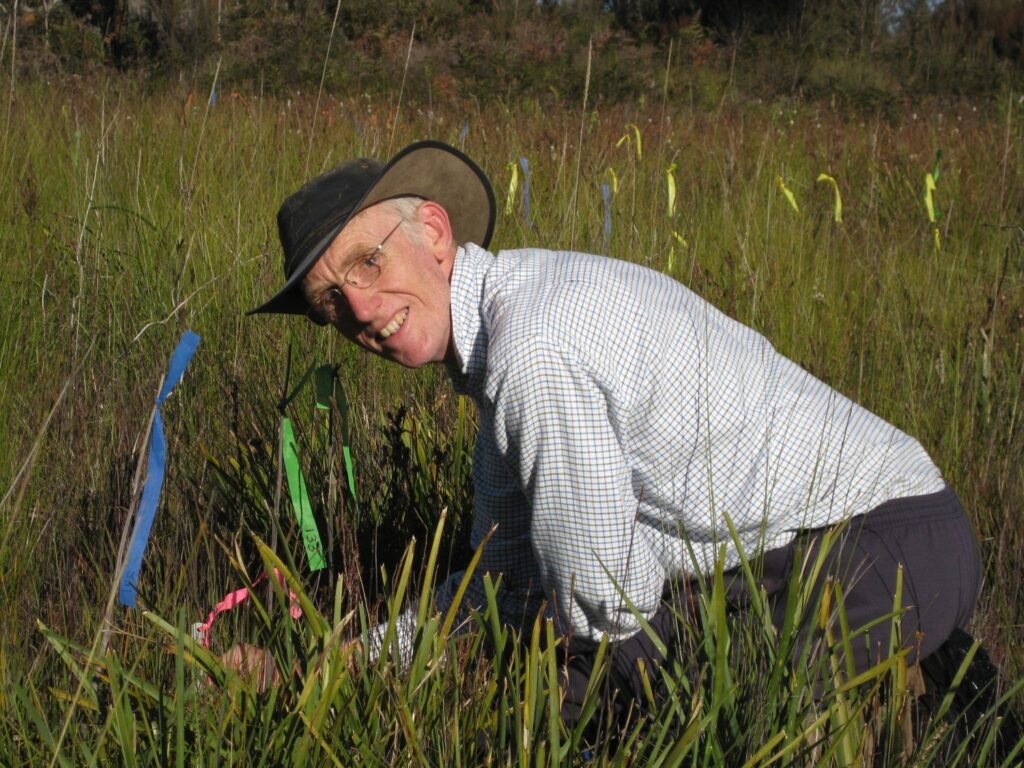
A very interesting read well done